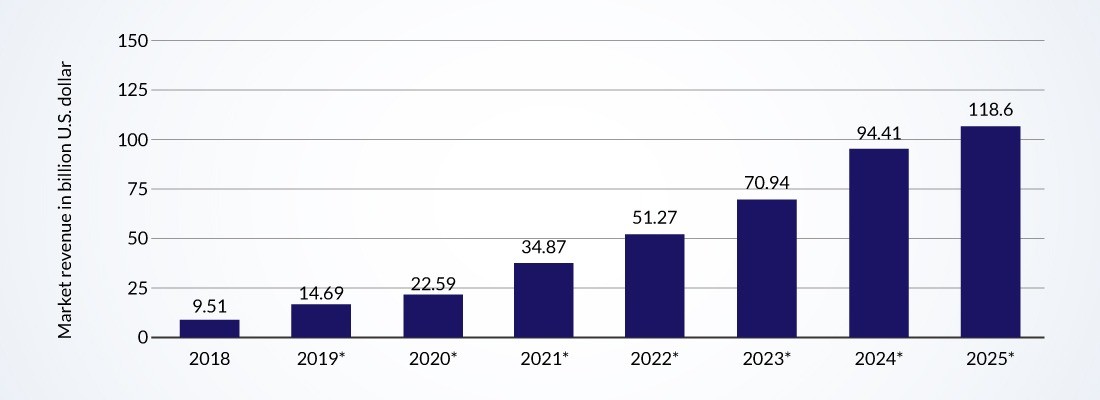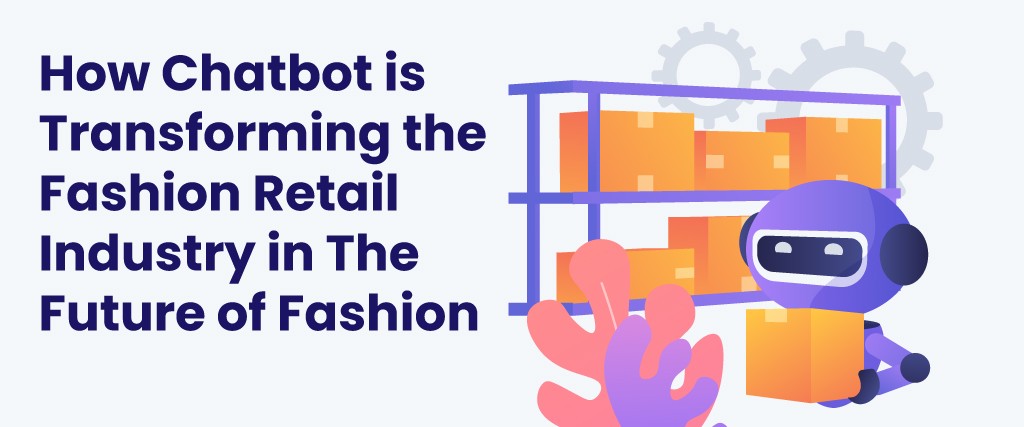The retail Chatbots in the fashion industry have evolved.
It moves quickly, so everyone involved, from designers to purchasers, needs to make sure they keep an eye out for the newest, shifting trends.
We now shop and discover things in quite different ways.
No other sector of the economy seems to have suffered more recently than retail.
Artificial intelligence (AI), blockchain, the Internet of Things (IoT), 3D printing, augmented reality (AR), and virtual reality (VR) have all been at the forefront of industrial disruption.
The capacity to transform a broad range of data into engaging, enriching information is perhaps one of the most notable examples of how fashion and technology have been linked.

From H&M to Tommy Hilfiger, some of the biggest brands in fashion are increasingly investing in algorithms that assist in recommending trends to their consumers.
Numerous AI-based companies like Yugasabot are likewise working to eliminate guesswork at all levels, from customers to merchants.
According to a recent study, merchants will invest significantly in AI-related technologies like chatbots, blockchain, and the Internet of Things during the next five years.

It is undeniable that artificial intelligence has fundamentally changed how business is conducted.
There are several ways AI has benefited the fashion industry, from predictive analytics in business to computer vision in recognizing product features.
The methods listed below serve as examples of how effective using AI in the fashion industry may be.
● Customization:
The fashion business may use AI similarly to how Netflix, YouTube, or Amazon propose related programs or items.
More customer data is being collected than ever as e-commerce has become a popular method of shopping.
Many popular fashion websites can keep track of their users’ browsing habits and recommend comparable products based on color, style, and design.
● Better customer service and communication – Retail Chatbots
While calling and emailing are still common among many firms; they are gradually disappearing.
The development of chatbot technology in recent years has dramatically enhanced consumer conversion and interaction with fashion firms.
Several tools are available that assist manage leads, responding to inquiries, and making product suggestions, from IBM Watson to Hubspot Chatbot.
● Better planning and purchasing:
Deciding precisely which material to purchase for designers is a challenge many fashion buyers and planners encounter.
A firm may suffer if they place an excessive order, mainly if the product does not perform as well as it had intended.
However, with the help of sophisticated predictive analytics, purchasers may successfully learn from client behavior and therefore plan more precisely.
You can design and purchase more accurately if you know the top and worst-selling things.
● Automating activities
The capacity to automate repetitive work is one of the most significant advantages of adopting artificial intelligence.
Menial data input, computations, and other tasks that can easily be handled by artificial intelligence alone take up the bulk of firm employees’ working hours.
Measuring margins using AI with more organization and precision while utilizing fewer human resources is a significant value for fashion businesses.
Many merchants can now concentrate on more crucial issues like strategy and execution because of this spare time.
● Controlling inventory:
Overordering and the resulting loss of revenue from unsold inventory are significant issues that merchants must deal with.
Maintaining business but avoiding holding onto too much so that you end up with wasted goods has always been challenging.
At the same time, there have been demand forecasting tools for a while; conventional approaches utilized previous sales data.
When the data sets exceed 10,000, the bulk of the calculation work must be done by people and is subject to restrictions.
But with machine learning, you can increase prediction accuracy by up to 50% and are not limited by the number of data points and sources you may employ.
● Reduced returns:
Compared to other verticals, apparel returns take around three times longer to check.
Because of this, operating expenses are significant.
However, merchants may assist consumers in making better-educated buying selections using AI (as described above).
By preventing unhappiness and enhancing communication, this rise in personalization and improvement in return rates are achieved.
Retailers lose around $642.6 billion annually due to avoidable returns; thus, using AI would be fantastic.
● Product discovery – Retail Chatbot
It is now better. Customers can now submit a picture of a product they are interested in and get immediate feedback on whether that item is available in the selected retailer, thanks to computer vision development of machine learning.
Additionally, some programs can scan a picture and suggest stores and locations where the user may purchase the item.
One excellent illustration of this is Google Lens, which enables smartphone users to take a picture of a product and instantly discover and purchase like models.
Like this, Pinterest’s Lens uses AI technologies to look for aesthetically comparable pins across their database.
FAQs
Why are chatbots gaining so much traction?
Window shoppers and new consumers may benefit significantly from being asked what they’re searching for since chatbots are designed to ask questions, gather replies, and automatically route customers.
How may chatbots change your company?
Another intriguing benefit of implementing a chatbot into your company is that it can manage numerous consumers simultaneously, which a human cannot accomplish without experiencing response delays or waiting times.
Do clients favor chatbots?
There are many fantastic ways your company may employ chatbots to accomplish your objectives.
However, some customers will be more difficult to influence than others.
For instance, even though the numbers are growing closer every year, data indicate that most consumers still choose human help over AI assistance.
Conclusion
Without question, AI is transforming the fashion business in ways no one could have predicted.
By using the fundamental AI capability of machine learning, merchants, manufacturers, designers, and managers are seeing significant benefits.
Fashion merchants can now forecast top and worst selling with more precision than ever before, thanks to the use of AI and big data.
This widens the window of for-profit development and paves the path for better sustainability by cutting down on inventory waste.
Read More: How Chatbot are beneficial in the Retail Industry







